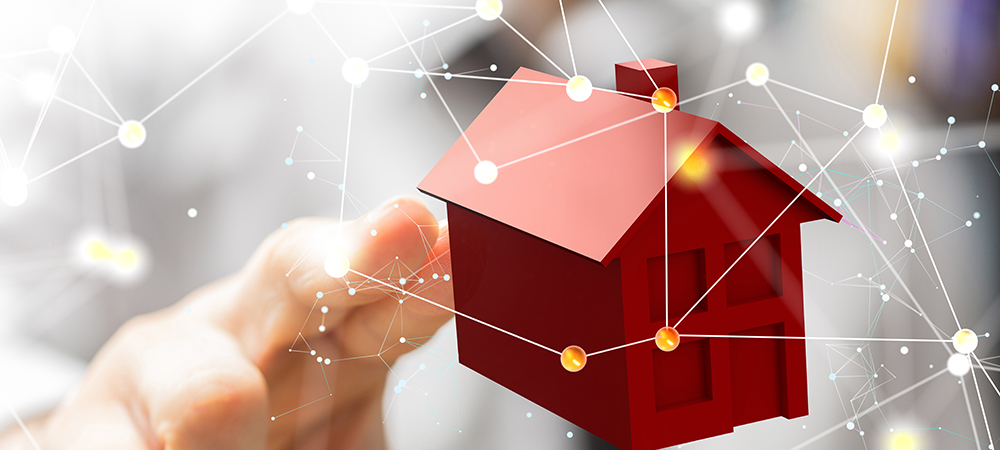The UK’s housing sector is under pressure to deliver an extensive retrofit programme to meet the government’s ambitious target of net zero emissions by 2050 and to reduce annual carbon emissions by more than half in the building sector by 2035. In this article, we hear from Sam Collier, Head of Market Intelligence, Aico, a market leader in home safety working with sectors such as social landlords and government bodies, about how harnessing Internet of Things technology (IoT) can support social housing net zero goals.

In response to the increasing urgency of climate change, East Devon District Council is just one UK local authority that is actively reducing its carbon footprint with an aim towards net zero by implementing proactive energy efficiency measures. The council recently adopted a data-driven strategy, deploying environmental sensors in its portfolio of social homes, to actively determine which properties were a priority for retrofit measures, in terms of poorest condition and/or tenants at risk of fuel poverty.
The environmental sensors are deployed across 50 of its locations, to provide the council with data-driven guidance for each home’s energy requirements, and retrofit necessities. Retrofitting initiatives range from switching to low-energy LED light bulbs to upgraded heating systems and enhancing insulation to improve energy efficiency. The benefits of the improvements offer residents a healthier, happier, more cost-effective home and for the housing provider, an increase in property value and a reduction in carbon emissions.
Before undertaking any retrofitting projects, identifying higher-priority properties with the greatest need for improvement can bring about the biggest impact. A large proportion of energy efficiency assessments are based on a standardised set of assumptions. However, each home is unique, and every household has its own way of living. So, while standard assessments work to some degree, we don’t really know which measures are effective in different situations. Substantial benefits can be realised using assessments according to each different property type, individual indoor environments and the occupants’ habits rather than adopting a one-size-fits-all approach.
IoT sensors and connected systems helped with this individual assessment approach by giving housing providers like East Devon District Council access to non-intrusive actionable insights in near real-time, providing a more comprehensive view of its entire portfolio. This enables the council to identify homes in need of upgrades and undertake the correct measures, which in turn will help the efficiency of the properties and create healthier homes for residents.
Identifying at-risk properties via the IoT-connected home system also enables the council to proactively address potential risks by enhancing homes through upgrades such as improved ventilation, enhanced insulation and new windows. The retrofitted upgrades aid the reduction in energy consumption, leading to decreased energy bills for the residents. The data from the sensors also offers advice and alerts to encourage them towards more sustainable practices in their homes, such as ventilating while cooking to avoid damp and mould occurring.
By taking advantage of a roaming sim card and RF interconnection, allowing the IoT devices to remain connected to the best available mobile networks at all times, the sensors can be seamlessly retrofitted into existing properties. Once installed, they provide housing providers with consistent key air quality information such as temperature, humidity and carbon dioxide, as well as connecting to new and existing fire and carbon monoxide alarms providing insight on activations and general maintenance. This provides a data-driven overview of property conditions such as indoor air quality risk, damp and mould, excess heat, cold homes, potential fuel poverty and void risk.
Realising the benefits of IoT technology, smart devices like the HomeLINK Connected Home Solution, are rapidly being implemented by other local authorities across the UK, educational establishments, social housing landlords and housing associations, to help them achieve net zero in their property portfolios.
Selwood Housing and Wolverhampton Homes are two examples of housing associations that have both implemented IoT sensors. The former partnered with Aico on a pilot initiative to help leverage advanced IoT technologies to monitor and manage environmental conditions in its homes. The latter embarked on a comprehensive refurbishment programme of its housing portfolio to upgrade them using modern design concepts so they would be more energy efficient, helping Wolverhampton Homes towards its net zero goal.
With a high level of the country’s housing stock currently failing to meet adequate levels of energy efficiency, and no previous overarching standard for retrofit work, PAS 2035 was introduced by the government’s Department for Business, Energy and Industrial Strategy (BEIS) and the British Standards Institute (BSI). PAS 2035 promotes whole-house retrofit as a critical framework for raising the standards of remedial work in homes. It demands that housing providers and builders ensure any publicly-funded domestic retrofit meets the outlined energy efficiency requirements.
PAS 2035 also requires landlords to conduct post-retrofit monitoring and evaluation to ensure the retrofit design implements improved efficiency with no unintended consequences. The data and insights from IoT-connected environmental sensors are invaluable for housing providers, assisting them in providing better information about the performance of homes so they know whether their energy-efficient retrofits have delivered the intended outcomes. BS40101, the British Standard on building performance evaluation, goes further in reinforcing the importance of monitoring post-retrofit and is now strongly referenced in PAS 2035.
Through measuring temperature, humidity and carbon dioxide, landlords can use remote data insights available in the HomeLINK Portal to evaluate if the retrofit project has delivered the expected outcome without any unintended consequences, for example, an increased risk of dampness and mould due to retrofit works increasing the air tightness of a building.
Data-driven retrofitting projects designed to improve living conditions and energy efficiency are increasingly being undertaken by housing providers. Whether a home has a high level of moisture or is not adequately heated, social landlords are now able to identify this and understand their stock better to initiate immediate fixes or provide appropriate support, facilitating to a forward-thinking approach to creating more comfortable, sustainable and safe living spaces for their residents.




